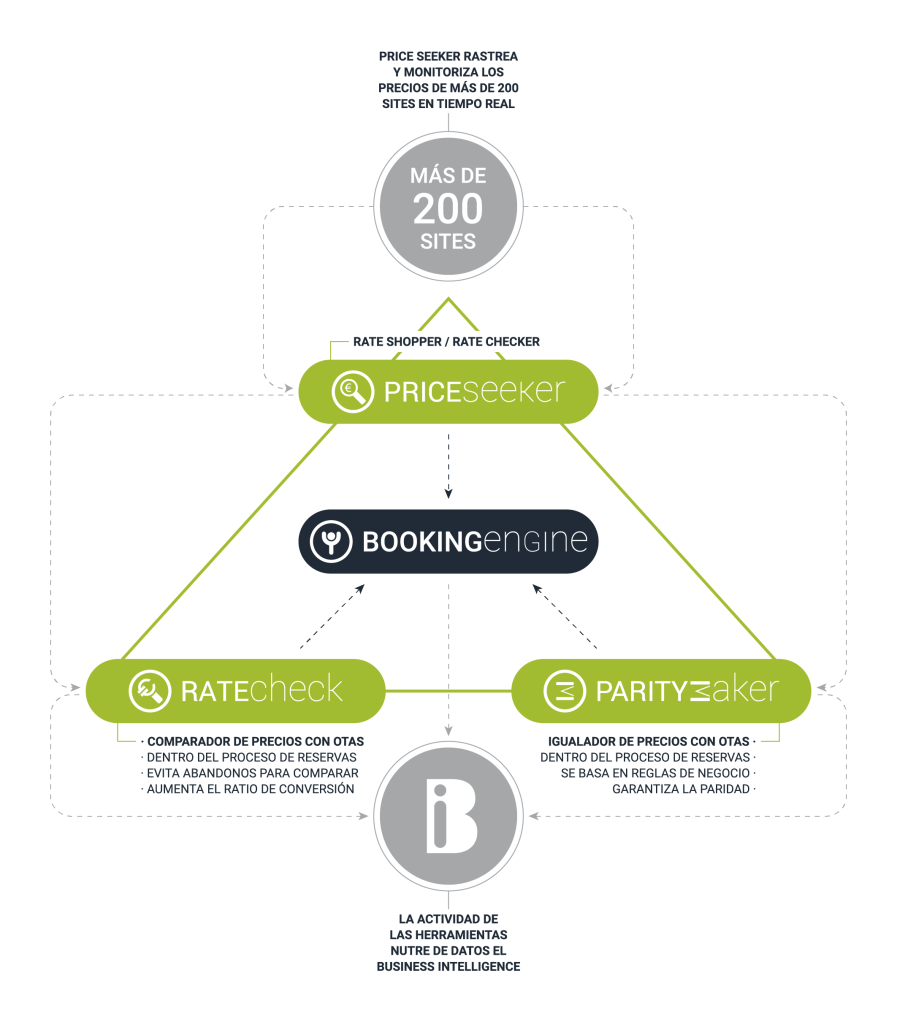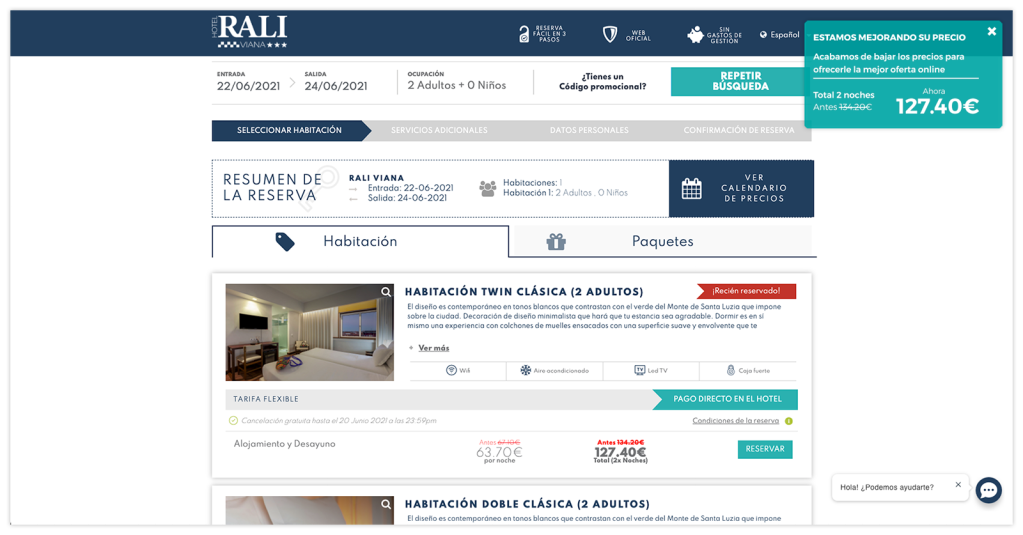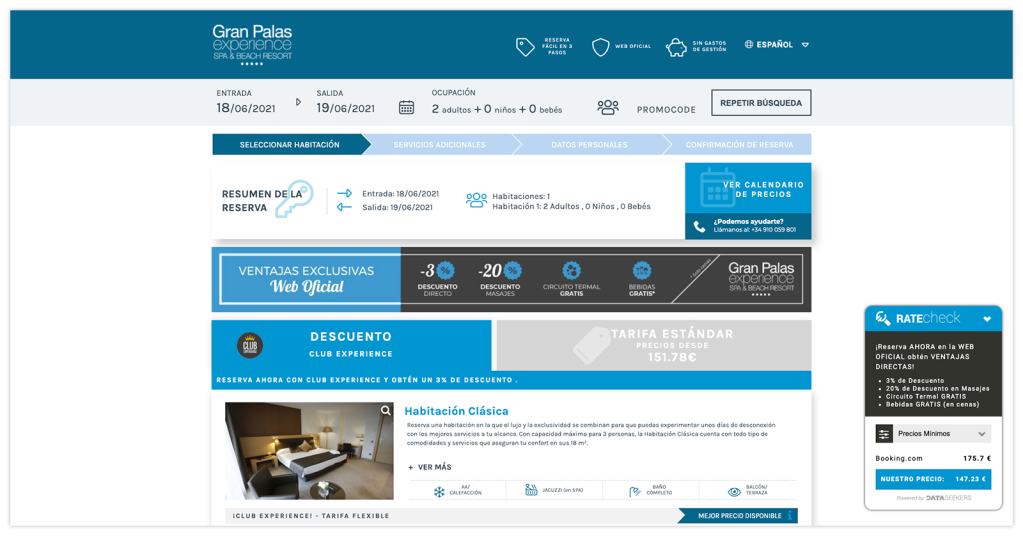The triangle of parity: he who follows it, achieves it, or almost
Booking Engine 18/06/2021Parity: A concept applicable to various fields (we have expressed our views on positive disparities on occasions), but traditionally associated with price, closely linked to distribution.
Specifically, parity refers to the equality of prices for a particular product across different sales channels. In the hotel industry, establishments that invest resources in addressing disparities presumably do so to favor the direct channel, their official website. However, this is not always the case.
Skeptics consider parity a utopia, while others see achieving it as almost an obsession. Some undervalue it, and others even despise it. Opinions are typically influenced by the degree of inclination of the accommodation towards direct sales. In any case, it is undeniable that parity is a term very present in hotel marketing and revenue management, leaving no one indifferent.
Parity serves multiple purposes. For example, it ensures that the value each owner attributes to their product(s) is respected. delving deeper, we know firsthand its power and firmly believe in its importance for boosting direct sales, at the expense of intermediated sales. Better yet, we have found the formula to keep it permanently under control, preventing it from becoming a persistent headache.
No one can guarantee it, and neither can we. But after almost a decade of working on it, we strongly believe that persistence pays off. That's why today we want to talk about our Parity Triangle, a complete ecosystem of tools, all developed in-house, in constant communication with our booking engine, ensuring price integrity and adherence to business rules, whatever they may be.

What tools make up the Parity Triangle?
One strength of developing all our solutions internally is the independence from third parties, resulting in greater responsiveness and better communication between tools. Price Seeker, with us almost from the beginning and currently undergoing a comprehensive overhaul, is one of the most established Rate Shoppers in the market and the central pillar of the Parity Triangle. Capable of monitoring prices from over 200 sites in real-time, its tracking engine extracts data to feed its two allies.

We define Parity Maker, a pioneering and still exclusive tool even after several years in circulation, as an equalizer of prices between the official website's booking engine and OTAs in real-time. However, it goes beyond equalization, applying a business rule pre-configured by the hotelier. Therefore, it can not only equalize but also lower or raise that equalization, both in percentage terms (equalize and increase by 3%) and in net terms (equalize and decrease by €5), always considering the interests of the establishment.

On the other hand, Rate Check is a price comparison tool with OTAs and Metasearch engines integrated into the booking process. Controlling prices is crucial, but it is even more effective when ensuring that users are aware of this competitive advantage. That's precisely its main function. The Rate Check widget displays OTA prices for the same search criteria entered by the user when initiating a query on the official website's engine. It will only list the prices of OTAs that are more expensive at the time of the search. Thus, we prevent users from abandoning the site to compare prices and convey a clear message: the official website offers the best online price.

How the Parity Triangle Works: The Power of Business Rules
As mentioned earlier, it is the scrapers of Price Seeker that work in the background for Rate Check and Parity Maker, regardless of the distribution mix configured in the rate shopper (or if this tool is not contracted). This means that we can select five OTAs to monitor constantly in Price Seeker but choose other channels to operate with Rate Check and/or Parity Maker.
The power of business rules lies in their high segmentation capacity and the wide range of possible actions to apply. In their configuration, we can differentiate OTAs by markets, time slots, occupancies, etc. Specific Business Intelligence will keep us informed of their activity:
- How many times the Rate Check widget was displayed
- For which search criteria
- If the user clicked on the widget
- If there was a disparity or not
- The minimum prices of the website/OTA
- The existing differential (positive or negative)
- If Parity Maker came into action
- If the reservation was completed.
Additionally, Rate Check is, in itself, an automated alert system, so if it does not display the price of a certain OTA because it is more expensive than the official website, it will send an email to the hotelier informing them of the disparity so that they can correct it.
In summary, through business rules, we define, on the one hand, when the tools should come into action and, on the other hand, what order they should execute. The following examples will help better understand the scope of business rules:
Example #1 | Parity Maker: If Booking is cheaper, match the price
If Booking.com, to cite any OTA, usually causes disparities, this is the best way to avoid them.
Example #2 | Rate Check: If the customer is Spanish, show Atrápalo and Destinia, but if they are British, show Alpharooms and Onthebeach
Depending on the customer's origin, they will be interested in knowing the prices of different OTAs, and Rate Check allows discrimination by markets. Furthermore, by doing so, prices from different markets are being tracked, generating alerts and providing data for configuring new business rules. Pure feedback.
Example #3 | Parity Maker: Match the price with Booking during the day, but do it with Destinia at night
Not all OTAs behave the same way or generate disparities at the same times of the day. With Price Seeker, we can obtain a well-defined map of these behavioral patterns and then use that information to configure business rules for the other two tools.
Example #4 | Parity Maker: For very high positive differentials, increase the price by a certain percentage
Imagine that the official website is much cheaper than Atrápalo. So much so that even if we increase the price by a certain percentage, we would still be the most economical option. In that case, we can instruct Parity Maker to raise the price to increase profitability.
Conclusions: We do believe in parity
In summary, Price Seeker is a consultation and control tool that only the hotelier interacts with. With it, we can conduct a thorough monitoring of parity and competition, generate periodic reports, perform searches, configure alerts, etc. While Parity Maker and Rate Check are presented directly to the user or potential guest, providing information, incentivizing them in real-time, and facilitating the best price during their booking process.
And although all three tools can function and be contracted independently, it goes without saying that using them together exponentially multiplies their ability to make price parity a reality, and to ensure that the hotel's official website always offers the best prices.
Feel free to contact your account manager for further information.


















